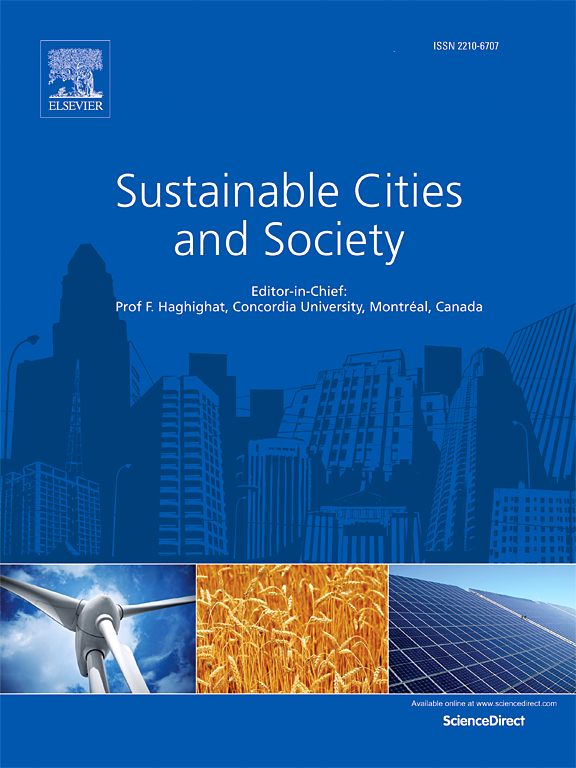High spatio-temporal and continuous monitoring of outdoor thermal comfort in urban areas: A generic and modular sensor network and outreach platform
IF 10.5
1区 工程技术
Q1 CONSTRUCTION & BUILDING TECHNOLOGY
引用次数: 0
Abstract
This study presents an operational citywide monitoring network designed to measure meteorological and human biometeorological variables at a high spatio-temporal resolution. The network is based on an in-house developed, generic data logging and monitoring platform, with 13 stations strategically placed at the pedestrian level on public street lights within the urban canopy layer of Freiburg im Breisgau, Germany. Over the first year of deployment (August 2022 to August 2023), the stations continuously collected high-resolution data (30 s intervals) with a minimal data loss rate of 2% for half of the stations which underscores the robustness of the network. The collected data includes Black Globe temperature, used to calculate the Physiologically Equivalent Temperature (PET) and other thermal comfort indices such as Tropical Night. A case study focused on a July 2023 heatwave showed that residential mid- to low-density areas experienced 16.5 to 18.7 h of extreme heat stress, while inner-city sites recorded the highest number of tropical nights ( 20 °C), with 5 to 6 nights, compared to 3 in outer areas. The findings demonstrate significant spatial variability in thermal stress across urban microclimates, particularly during extreme weather events. To address the gap in real-time data dissemination and science communication, we developed the uniWeather outreach platform and app, providing end-users and the public with free access to real-time data, following FAIR principles. This continuous data set is invaluable for urban climate modelers, offering real-time monitoring and insights into localized thermal stress, and can inform urban heat mitigation strategies and adaptation planning for policymakers and city planners.

求助全文
约1分钟内获得全文
求助全文
来源期刊

Sustainable Cities and Society
Social Sciences-Geography, Planning and Development
CiteScore
22.00
自引率
13.70%
发文量
810
审稿时长
27 days
期刊介绍:
Sustainable Cities and Society (SCS) is an international journal that focuses on fundamental and applied research to promote environmentally sustainable and socially resilient cities. The journal welcomes cross-cutting, multi-disciplinary research in various areas, including:
1. Smart cities and resilient environments;
2. Alternative/clean energy sources, energy distribution, distributed energy generation, and energy demand reduction/management;
3. Monitoring and improving air quality in built environment and cities (e.g., healthy built environment and air quality management);
4. Energy efficient, low/zero carbon, and green buildings/communities;
5. Climate change mitigation and adaptation in urban environments;
6. Green infrastructure and BMPs;
7. Environmental Footprint accounting and management;
8. Urban agriculture and forestry;
9. ICT, smart grid and intelligent infrastructure;
10. Urban design/planning, regulations, legislation, certification, economics, and policy;
11. Social aspects, impacts and resiliency of cities;
12. Behavior monitoring, analysis and change within urban communities;
13. Health monitoring and improvement;
14. Nexus issues related to sustainable cities and societies;
15. Smart city governance;
16. Decision Support Systems for trade-off and uncertainty analysis for improved management of cities and society;
17. Big data, machine learning, and artificial intelligence applications and case studies;
18. Critical infrastructure protection, including security, privacy, forensics, and reliability issues of cyber-physical systems.
19. Water footprint reduction and urban water distribution, harvesting, treatment, reuse and management;
20. Waste reduction and recycling;
21. Wastewater collection, treatment and recycling;
22. Smart, clean and healthy transportation systems and infrastructure;
 求助内容:
求助内容: 应助结果提醒方式:
应助结果提醒方式:


